What are Perennial Plants: Flowers That Come Back Every Year in Your Garden
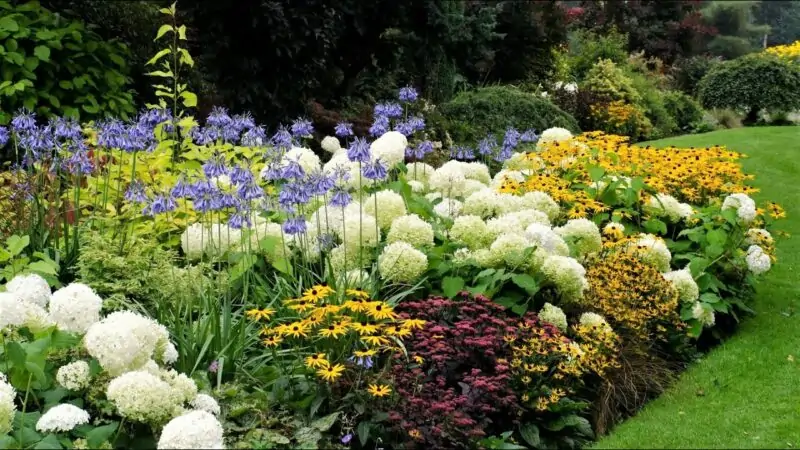
Ever wondered, “what are perennial plants?” Well, you’re about to enter a world of perennial exploration. We’re about to unveil the magic of these plants that bloom year after year, adding continuous beauty to our gardens. You’ll learn all about perennial plants, their lifecycle, and why they’re a garden’s best friend.
What is a Perennial Plant?
When it comes to plant royalty, perennials rule. These are the long-lasting plants that bring our gardens to life with their blossoms and greenery, and they do this season after season. In contrast to annuals, which wrap up their life cycle within a single growing season, perennials endure. They live for at least three to five years, and often much longer. These are the robust, dependable stars of the garden stage, enhancing our outdoor spaces year after year.
So what’s the secret to their perennial persistence? Well, it all lies in their hearty root systems. They burrow deep into the soil, allowing them to store energy over winter, ready to burst forth with vigor as soon as the weather warms up. From herbaceous perennials like daylilies, which surprise us with their lively display every second year, to tough shrubs that become a garden’s backbone, perennials are the gift that keeps on giving.
Perennial versus Annual Plants
Imagine a sprinter and a marathon runner. The sprinter is an annual plant, racing through its lifecycle in a single season, usually from early spring to late summer. Meanwhile, the marathoner is a perennial plant, enduring season after season, taking its time but always delivering long-lasting performances.
While annual plants add instant color to the garden, they only last one season, and then they’re gone. On the other hand, perennials, with their sturdy root systems, return year after year, enhancing our gardens with their consistent presence. Perennials are the reliable old friends of the garden, always showing up and making our outdoor spaces more enjoyable, year after year.
The Life Cycle of a Perennial Plant
Understanding the “Year After Year” Concept
The life cycle of a perennial plant is like a tale of rebirth and survival. These plants grow, bloom, and might die back to the ground during harsh winters. But as spring dawns, they rise again, regenerating from the same root system, ready to grace the garden with new growth and vibrant blooms.
This phoenix-like rebirth is one of the most magical traits of perennials. They remind us of the cyclical nature of life and the beauty of resilience. Some perennials, such as the herbaceous daylily, flower from late spring to early summer, while others prefer the summer months. But whatever their preference, perennials always ensure a lively garden party, season after season.
Distinct Characteristics of Perennials
Perennials are known for being cold-hardy plants that promise a comeback, even after enduring brutal winters. Their resilience makes them a gardener’s treasure, and their diverse range makes them a pleasure to grow. From the beautiful white or purple flowers of lupine-like perennials to the bold yellow blooms of daylilies, there’s a perennial for every garden and every gardener.
The Advantages of Growing Perennial Plants in Your Garden
Low-Maintenance Requirement of Perennial Plants
Who doesn’t love a low-maintenance garden? If you’re one of us, perennials are the way to go. Unlike annuals, which need replanting every year, perennials are time and effort savers, coming back every year all on their own. Some Perennials such as the resilient Russian Sage are drought-resistant, requiring minimal care once they’ve settled in your garden. They are easy to grow, making them the perfect choice for novice gardeners. Imagine not having to replant each spring! Instead, your garden is filled with flowering plants that return each year, unfurling their foliage and blooms for all to admire.
The Perennial’s Ability to Return Year After Year
Now, what could be more captivating than witnessing the enduring life cycle of perennials? These plants act as steadfast ground cover, returning year after year, providing a sense of continuity in your garden. They’re like the anchors of your green space, giving structure and consistent beauty, season after season.
Whether it’s early spring or late summer, perennials adapt and put on their best show. From showcasing beautiful flowers in a riot of colors to attracting pollinators like bees and butterflies, perennials are plants that truly reward the gardener’s efforts.
Top 10 Perennial Plants for Your Garden
Aster: The Star of Autumn
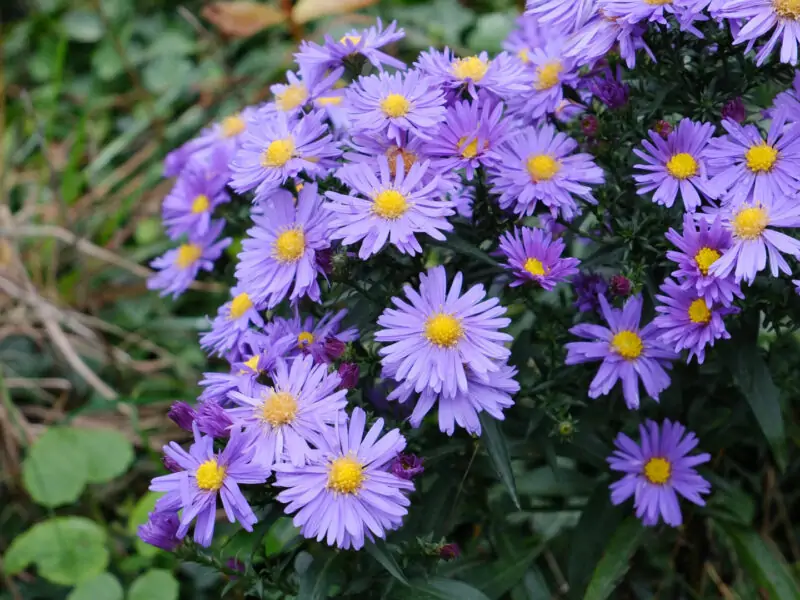
Asters are the autumn stars of the perennial world. Adorned with purple flowers, they bloom from late summer to mid-autumn. Asters are also cold-hardy plants that will return, year after year, transforming your garden into a purple paradise every autumn.
Asters are not just about aesthetics. They also serve as pollinator magnets, attracting butterflies to your garden. Whether you’re looking to create a colorful display or a pollinator-friendly garden, asters make the perfect perennial addition.
Peony: A Traditional Garden Staple
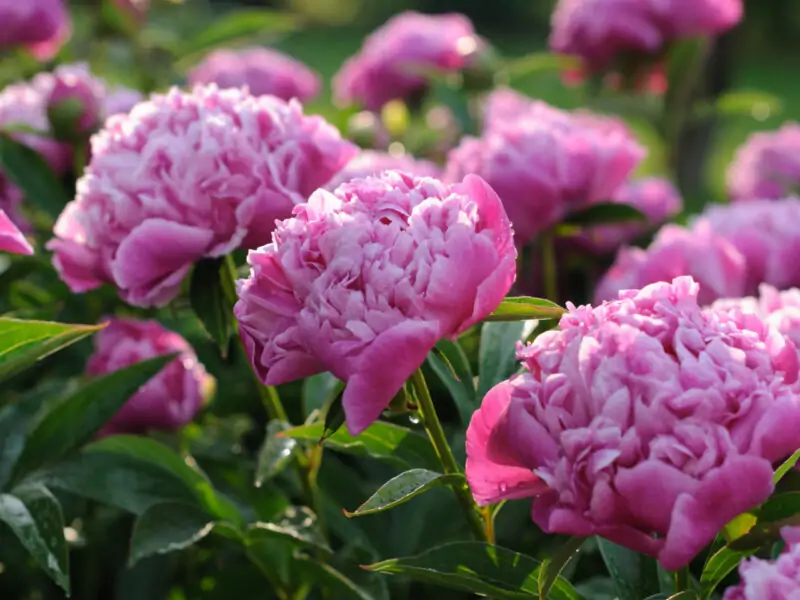
Peonies are the quintessential garden classic and a top perennial favorite among gardeners. Known for their beautiful, often fragrant blooms, peonies come in a variety of forms and colors, from white flowers to pink, red, and even yellow varieties.
From late spring to early summer, peonies are a spectacle to behold. They’re also long-lasting, with some plants living for more than 100 years! Plus, their cut flowers can make your home as charming as your garden.
Coneflower: Attracting Pollinators Year After Year
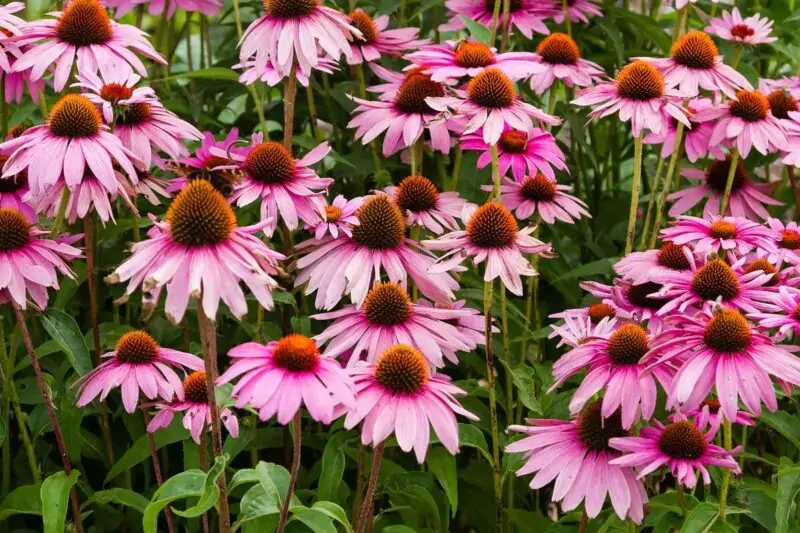
Coneflowers, also known as Echinacea, are native plants renowned for their health benefits and their role as pollinator attractants. They typically bloom throughout the growing season, providing nectar for bees, butterflies, and hummingbirds.
These low-maintenance plants are easy to grow and are best in full sun. Coneflowers are not just beautiful; they’re a boon to the local pollinator population, making your garden a buzzing, fluttering haven.
Black-Eyed Susan: Low-Maintenance Beauty
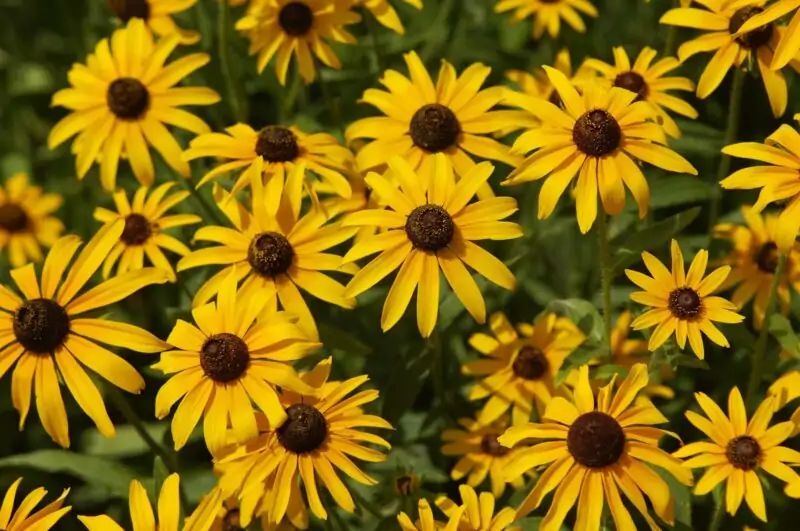
When it comes to low-maintenance plants, the Black-eyed Susan stands out. This tough perennial is known for its striking yellow flowers, which bloom from mid to late summer. They’re versatile too, suitable for borders, cottage gardens, or even as cut flowers to brighten up your home.
Russian Sage: Drought-Resistant and Hardy
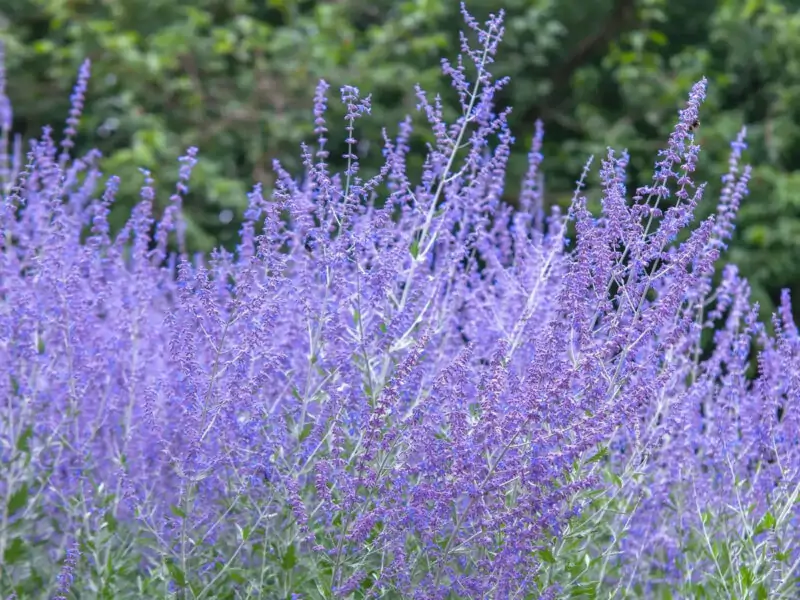
Looking for a perennial that’s resilient and looks beautiful too? Meet Russian Sage. This plant sports purple flowers and silvery foliage that create a striking contrast in the garden. Best in full sun, these plants are drought-tolerant, proving their mettle as truly tough perennials.
Daylily: A Flower for Every Day
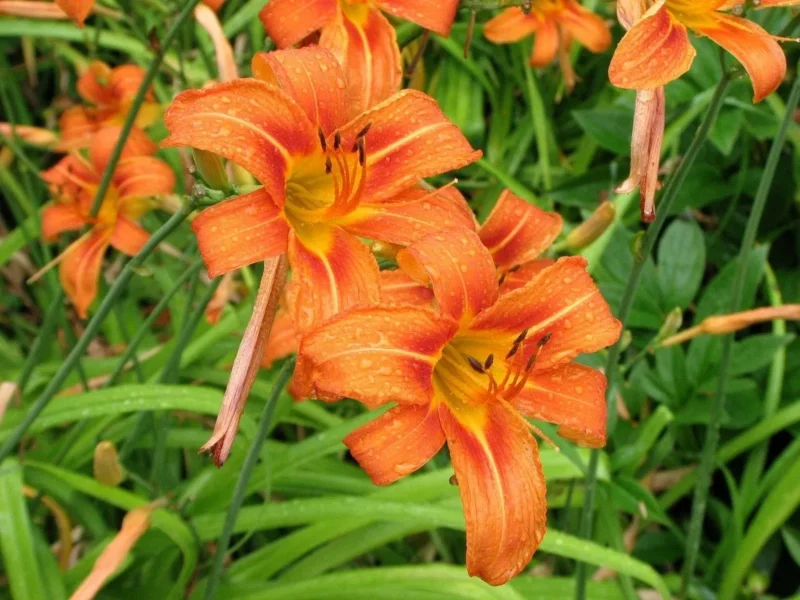
Ah, the Daylily, a perennial that certainly lives up to its name. Each bloom lasts for just a day, but fret not! This perennial plant compensates by producing a multitude of buds ready to take the spotlight. Daylilies bloom from early spring through late summer, ensuring a steady display of vibrant flowers throughout the growing season.
While daylilies typically boast orange flowers, they come in a wide spectrum of colors. From yellow to pink, purple, red, and even multicolored, there’s a Daylily for every garden palette. Plus, they’re easy to grow and can adapt to a range of soil and light conditions.
Salvia: Long Blooming and Attractive to Hummingbirds
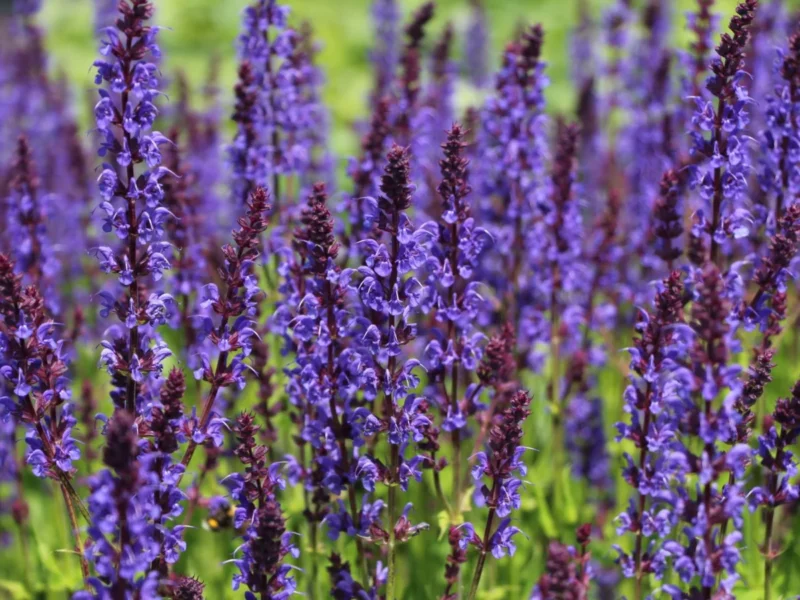
Salvia, also known as sage, is a standout among perennials. Why? It’s a hummingbird magnet! If you love watching these little aerial acrobats in your garden, Salvia is a must-have. Its striking blue flowers bloom from late spring to early summer, drawing hummingbirds in droves.
But that’s not all. Salvia is a long-blooming perennial, meaning it keeps your garden vibrant for an extended period. Plus, they’re drought-resistant and thrive in full sun. Salvia is indeed a perfect perennial, combining beauty, resilience, and an unmatched ability to attract pollinators.
Lavender: Fragrance and Utility
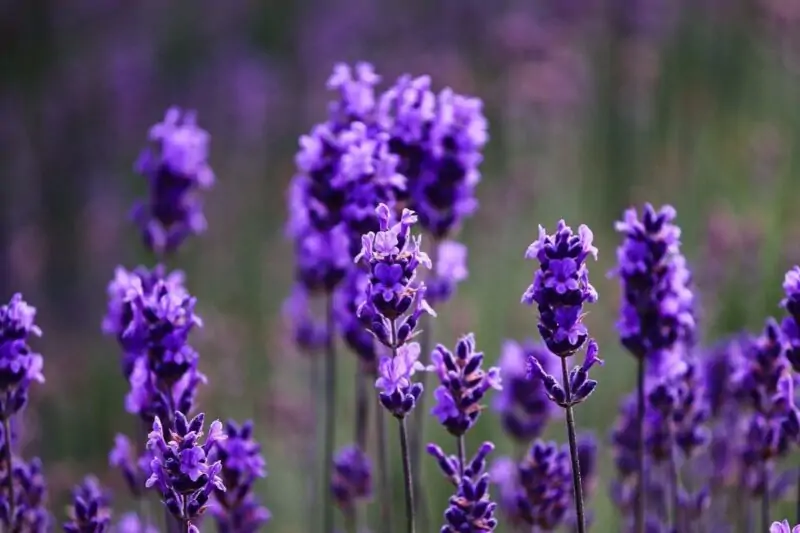
This perennial is famous worldwide for its soothing scent, stunning purple flowers, and wide range of uses. From infusing your garden with a calming fragrance to garnishing your summer lemonade, Lavender is as versatile as it gets.
In addition to its scent and culinary uses, Lavender is a top perennial favorite for its drought resistance and heat tolerance. Plant it in full sun and well-drained soil, and it’ll reward you with blooms from late spring to early summer.
Coral Bells: Colorful Foliage and Delicate Flowers
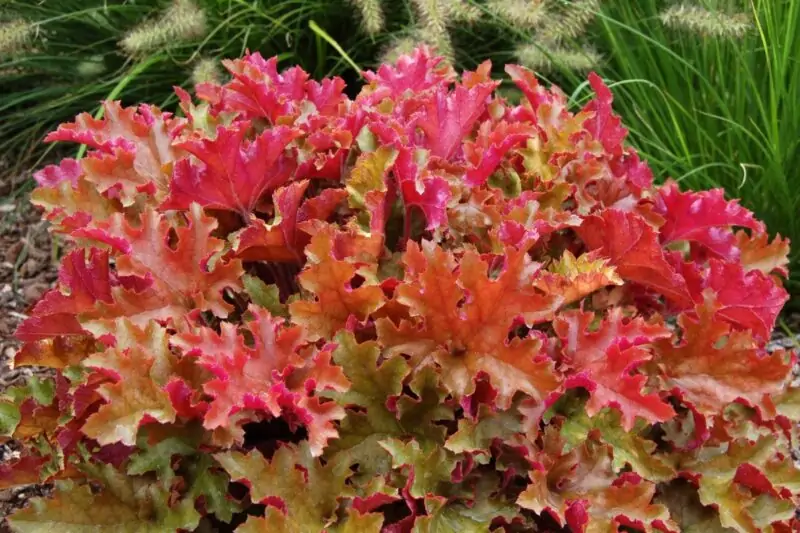
These perennials offer an exciting twist: their appeal lies in their colorful foliage as much as in their delicate flowers. From vibrant greens to deep purples, even silver, the leaves of Coral Bells are a spectacle in themselves.
And let’s not forget the blooms! Rising above the foliage, slender stalks bearing small bell-shaped flowers bloom in late spring to early summer. Coral Bells do well in a variety of light conditions, making them a versatile choice for any garden.
Hosta: Best for Shady Areas
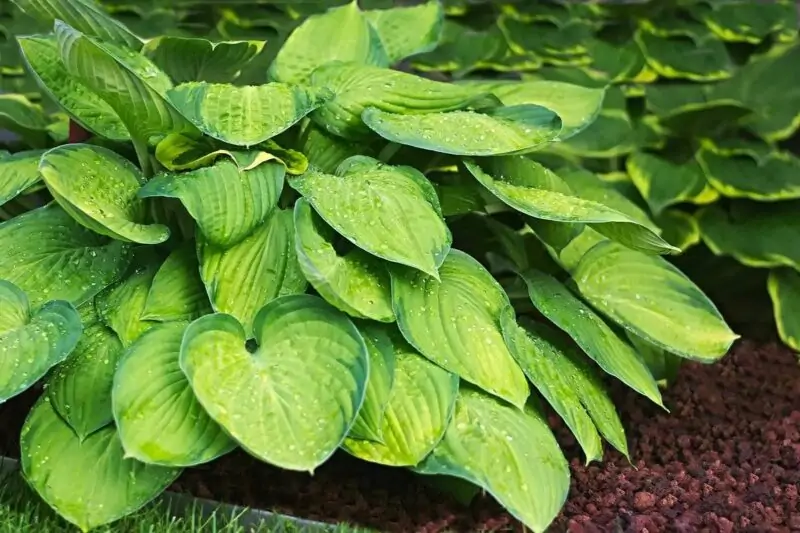
If you’ve got a garden with shady areas, meet your new best friend: the Hosta. This perennial thrives in shade, where many other plants struggle. With their large, lush foliage, Hostas add texture and a feeling of abundance to your garden.
While they’re mainly grown for their attractive leaves, Hostas also produce tall flower spikes in the summer months, usually in shades of white or lavender. From ground cover to edging, Hostas are a cool, calming presence in the garden, offering a respite from the summer heat.
How to Ensure Perennial Plants Thrive Year After Year
Proper Soil and Watering Techniques
Planting perennials in well-draining soil is key to their survival. They tend to rot in waterlogged conditions, so ensuring they’re planted in a spot where water doesn’t pool is crucial. Most perennials prefer full sun, although some, like hostas, thrive in shade.
Watering needs vary by plant type, climate, and season. While some perennials are drought-tolerant, others require consistent moisture. In general, watering deeply and less frequently encourages a robust root system, helping the plants survive the winter and return with vigor in the spring.
Pruning and Maintenance Practices for Perennials
The right pruning and maintenance practices keep your perennials looking their best and flowering year after year. Pruning back spent flowers often encourages re-bloom, while cutting back the entire plant in early fall or after the first frost can prevent diseases from overwintering.
When it comes to perennials, the best time to plant is typically in the spring or early fall. This gives the plants a chance to establish their roots before the cold winters or the heat of the summer. Remember, some perennials, called tender perennials, might not survive harsh winters and need to be brought indoors.
Frequently Asked Questions About Perennial Plants
Looking for a hands-off approach to gardening? Perennials like the Black-eyed Susan, Russian Sage, and Coneflower are known to be low-maintenance. These plants require minimal care and come back year after year, giving you a hassle-free, beautiful garden.
Watering frequency for perennials can vary based on the plant type, climate, and soil condition. A general rule of thumb is to water deeply and infrequently, promoting deep root growth. Always check the soil moisture levels before watering to prevent overwatering or underwatering.
While perennials are typically cold-hardy plants, their survival can vary significantly based on the climate zone. For instance, a perennial that thrives in the mild climate of the Pacific Northwest may struggle in the heat of the Southwest. Always check the plant’s USDA hardiness zone before purchasing.
The best time to plant perennials is usually in the spring or early fall. This allows the plants to establish their roots before extreme weather conditions of summer or winter. However, it’s always best to follow the specific planting instructions for each type of perennial.
Conclusion
This journey through the world of perennials, answering the question “What are perennial plants?” revealed the charm and utility of these plants. From understanding their year-after-year life cycle to exploring their distinct characteristics and learning about the top perennial flowers and plants for your garden, we’ve covered a lot of ground.
Growing perennials in your garden isn’t just about creating a beautiful outdoor space. It’s about cultivating a garden that blooms year after year, one that transforms with the seasons, and offers a refuge to the bustling pollinators. It’s a garden that’s alive, dynamic, and resilient. Just like perennials.